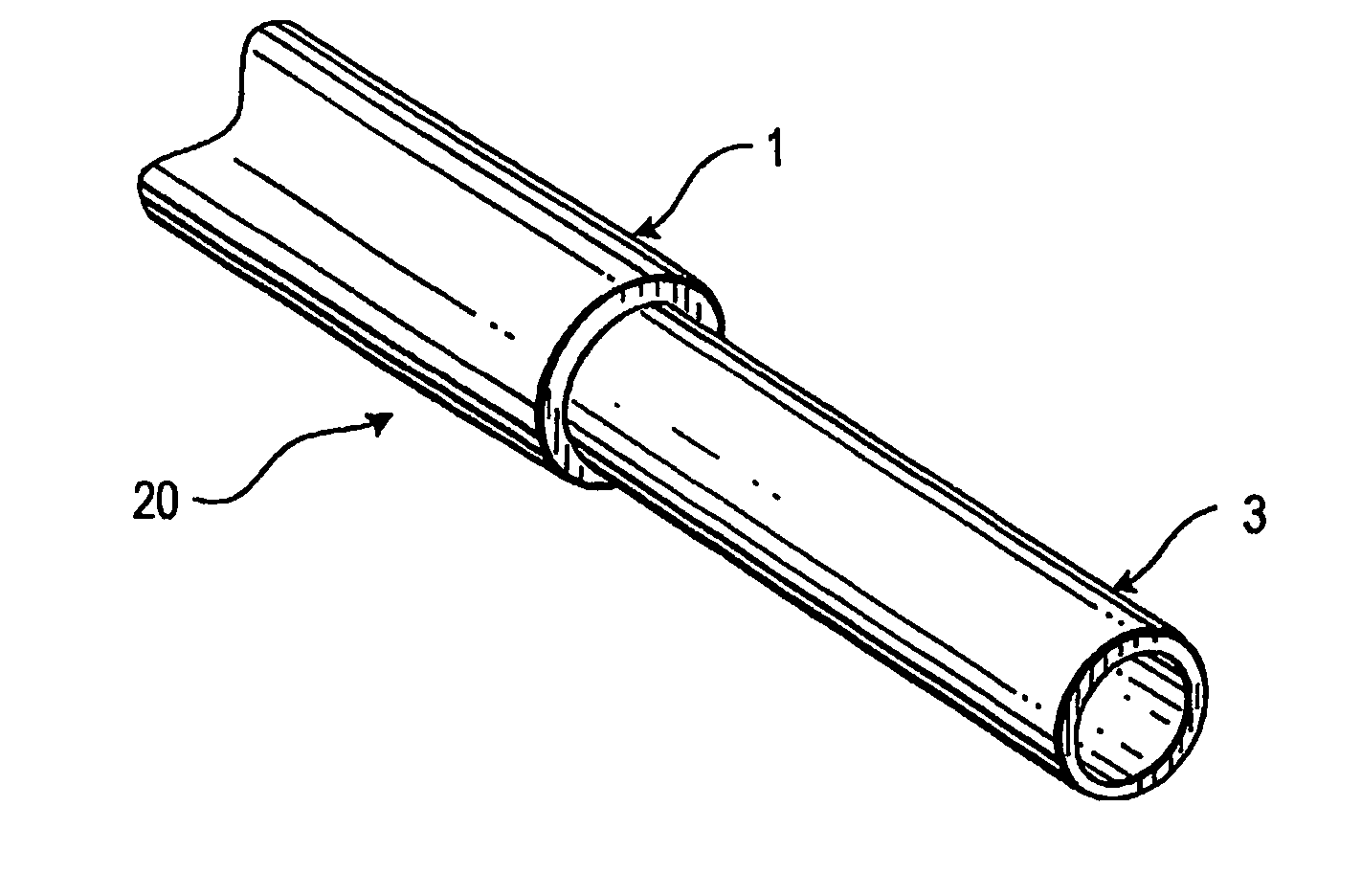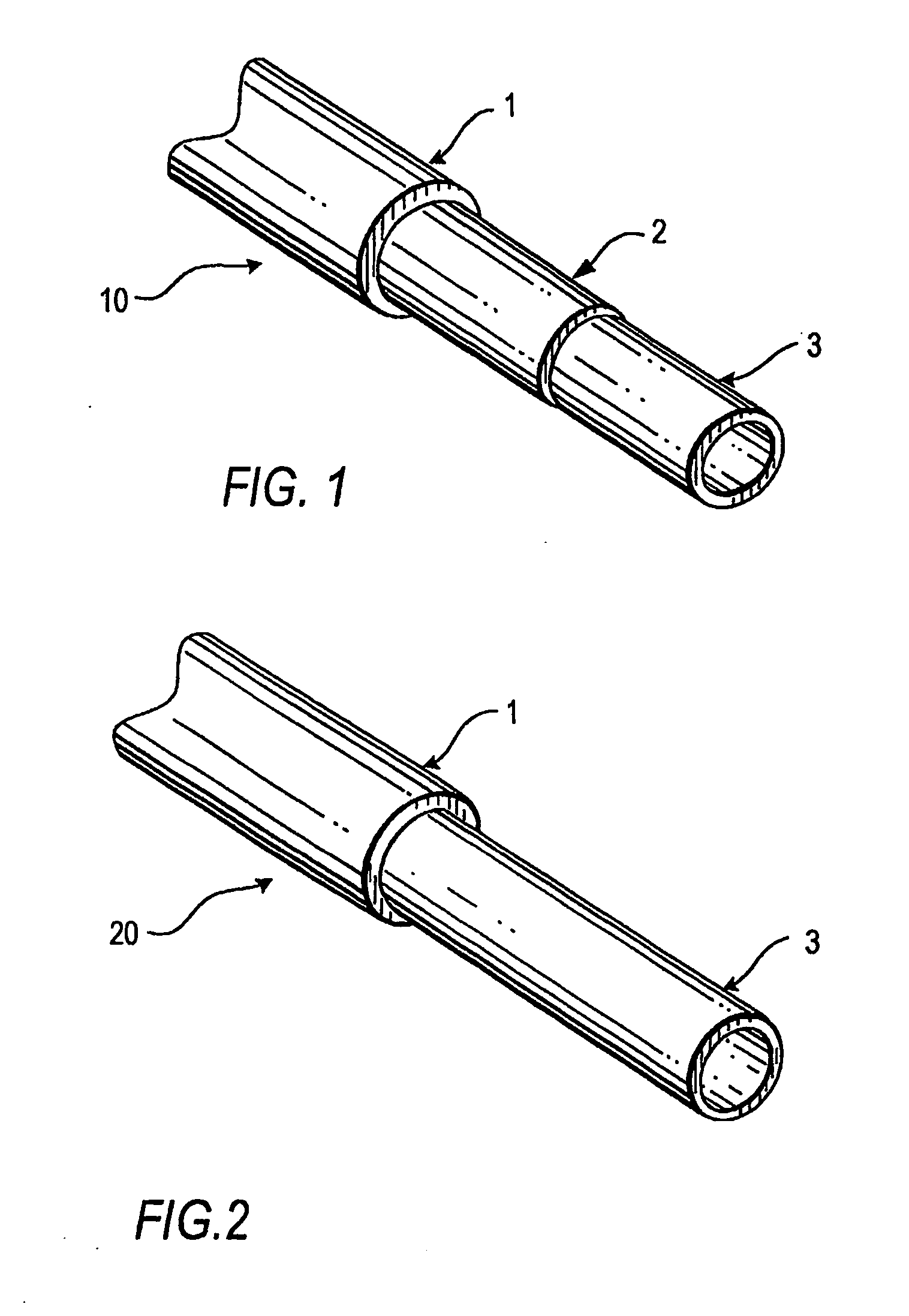Co-extruded tubing
a tubing and coextrusion technology, applied in the direction of bends, catheters, machines/engines, etc., can solve the problems of increasing contamination, limiting the selection of desired plastic materials, and contaminating the fluid being transferred with hazardous effects
- Summary
- Abstract
- Description
- Claims
- Application Information
AI Technical Summary
Benefits of technology
Problems solved by technology
Method used
Image
Examples
Embodiment Construction
[0015] Referring to FIG. 1, one aspect of the present invention provides a co-extruded tri-layer tubing 10 that includes an outer layer 1 of a polyester, such as a copolyester thermoplastic elastomer (TPE), an inner fluid-contact layer 3, and an intermediate bonding layer 2 of EVA.
[0016] Referring to FIG. 2, another aspect of the present invention provides a dual-layer tubing 20 that eliminates the need for an intermediate bonding layer. This dual-layer tubing 20 includes an outer layer 1 of a polyester, such as a copolyester thermoplastic elastomer (TPE), and an inner fluid-contact layer 3 of a thermoplastic polyurethane (TPU), such as an aromatic or aliphatic polyether-based TPU.
[0017] The polyester outer layer 1 has unexpectedly provided a tubing that is water-clear and flexible without the addition of plasticizers and other additives. The polyester may be a copolyester ether TPE such as Ecdel Elastomer 9966, Ecdel Elastomer 9965, Ecdel Elastomer 9967, and Ecdel development pol...
PUM
| Property | Measurement | Unit |
|---|---|---|
| thermoplastic | aaaaa | aaaaa |
| thickness | aaaaa | aaaaa |
| density | aaaaa | aaaaa |
Abstract
Description
Claims
Application Information
 Login to View More
Login to View More - R&D
- Intellectual Property
- Life Sciences
- Materials
- Tech Scout
- Unparalleled Data Quality
- Higher Quality Content
- 60% Fewer Hallucinations
Browse by: Latest US Patents, China's latest patents, Technical Efficacy Thesaurus, Application Domain, Technology Topic, Popular Technical Reports.
© 2025 PatSnap. All rights reserved.Legal|Privacy policy|Modern Slavery Act Transparency Statement|Sitemap|About US| Contact US: help@patsnap.com


